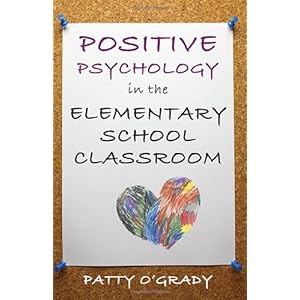Positive Psychology in the Elementary School Classroom
Plato wrote that the direction in which education starts a man will determine his future in life.
But what is education in our modern world?
School, as we know it now, is a place where the teacher attempts to teach to the average student, using a standardized curriculum. It is a place where teachers too often concentrate on content standards, rather than emotions, due to the pressures of accountability.
In addition, the National Institute of Mental Health estimates that eleven percent of adolescents have a depressive disorder by age eighteen. Between the way we instruct these kids and the current state of their mental health, it is no wonder they find it difficult to engage in class.
Implementing positive psychology, however, may open up a whole new world for both teachers and students.
You probably remember your favorite teacher: the one who challenged you, made you feel special, or taught you a lesson that has resonated throughout your life. Well, despite its reputation, positive psychology in the classroom may share some similarities to that teacher’s style. It is not just about feeling good, and far more than just “being happy.” It is about finding your individual strengths and personal motivations. Teachers who implement it can use academic subjects to teach about life lessons — about feelings, strengths, friendships, meaning, and pride in accomplishments.
In Positive Psychology in the Elementary School Classroom, Patty O’Grady offers enriching information that will help teachers instruct the whole child.
O’Grady provides resources and intriguing case examples. She shows how teachers can begin the process of creating experiences for children that motivate them to be active learners — a core skill of resilience.
Some of that requires creativity. I still remember one of my high school teachers, one who taught us history lessons by using strategies from the television show Jeopardy. The experience has stayed with me. In that vein, O’Grady encourages teachers to be creative when teaching young students concepts from positive psychology — things like courage and spirit.
The book also acknowledges that positive psychology does not have to mean everything is rainbows. Children, O’Grady writes, will learn that things don’t have to always be positive, but that working through failure is part of the learning and growing process.
Overall, O’Grady writes, positive psychology “teaches children the emotional strengths needed to self-regulate and generate positive emotion, build and broaden signature strengths, create and maintain relationships, find and invoke meaning, and accomplish their dreams.”
That’s a tall order for one teacher. But O’Grady presents a positive psychology teaching taxonomy and breaks it down into various benchmarks. By integrating positive psychology into the regular academic curriculum, instructors can have their kids learn about, say, World War II, plus the positive psychology concepts surrounding friendship, at the same time.
Teachers can also use the method to reduce discipline problems. Self-regulation skills taught through positive psychology can help kids temper angry responses.
And when children learn how to manage their thoughts, feelings, and behaviors so that they can make good choices, they develop self-determination. That, in turn, boosts their self-confidence.
As the author writes, a positive experience is a simple, daily activity that is pleasant and that calls specific attention to the emotion generated. Her approach intends to change feelings of discouragement to hopefulness, and to move from fear to courage. Positive psychology in the classroom setting also focuses on stress reduction, with exercises to help children reframe challenging experiences. After all, stress can impede comprehension and memory. Reducing stress, it follows, may help with learning.
O’Grady emphasizes that all children are different and learn in different ways. In one section, she discusses how teachers can identify a child’s signature strength — a strength the child calls upon “to change life from frustrating and exhausting to easy and exhilarating.”
Although the book is meant to help teachers, it makes a great read for therapists, parents, school counselors, and school personnel. It includes activities for school-based mental health professionals to utilize in an individual or group setting.
And, if you do lead a class, it just may make your teaching more memorable.

No comments:
Post a Comment